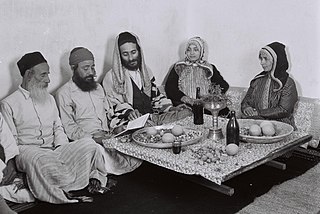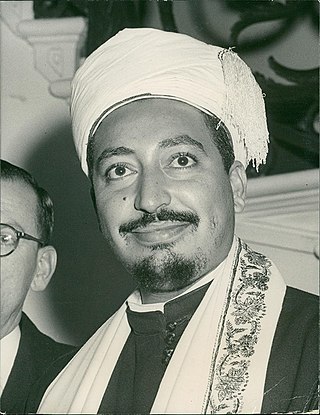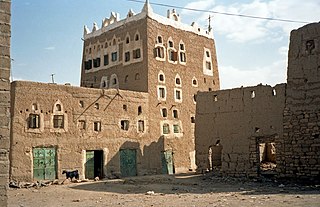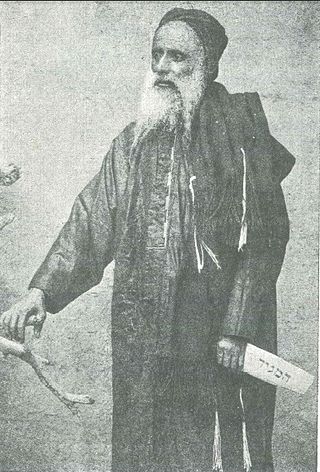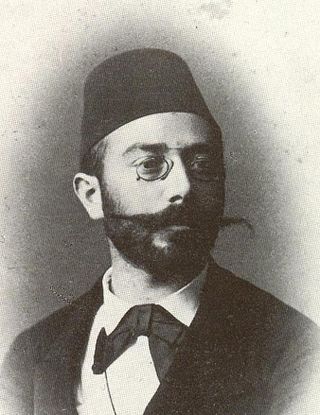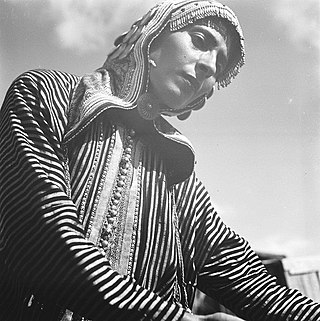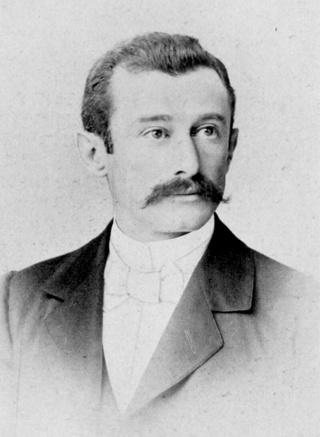Rathjens, with his two compatriots, disembarked from a boat which brought them to Yemen the first time in 1927. Upon their arrival in Hodeida, Carl Rathjens wrote to his family in Hamburg that when he entered Yemen he had “left civilization behind him; there are no banks, neither hotels, nor embassies. There are no cars, nor asphalt roads. There isn't any post office in Hodeida; one can use the Telegraph only in Hodeida and Sana’a. There are only two stamps in use in the country and they are not recognized elsewhere outside of Yemen. In the houses there is no tap water; neither is there electricity. The families hardly ever used furniture in their houses. The industrial revolution had not reached this country. Most of the products were hand-made; neither machines, nor technological utensils were used.” Compared with Europe, he felt as though he had returned in time to the Middle-Ages. Yemen was, for him, like jumping back five-hundred years in a time machine.
Rathjens and the king of Yemen
Already on his first visit, he developed a good rapport with the king, the Imām Yaḥyā Ḥamīd ad-Dīn (1864-1948) and his five elder sons, all of whom were serving the country and had ministerial posts, or else managed an important position in the court. Rathjens also nurtured a good relationship with the Prime Minister, Abdallah al Amri. With him he communicated in English. He had a good rapport with the Minister of Foreign Affairs, Muhammad Ragib, with whom he communicated in French. Rathjens and his colleagues were the official guests of the Imam Yahya. They were housed in the state guest house in Bir el Azab, near the Jewish Quarter at Sana'a. In his letters to family members and friends, he had repeatedly described how he enjoyed the hospitality of the king and felt that his life in Sana'a was like a chapter taken from the book, A Thousand and One Nights.
Rathjens and his two colleagues were accredited with making the first archaeological dig in Yemen. The Imam Yahya had sent the three German scholars to Huqqah to dig an ancient grave. [3] Rathjens could not convince the Imam that the three of them were not archaeologists. The three German scholars left for Huqqah near Haggah with a delegation of fifty soldiers and an inspector. With the help of fifty local workers, they unearthed a grave from the second century CE. Rathjens assumed that in Yemen, archaeology was in its nascent stages and that it should be encouraged and expanded. He reasoned, however, that the research should be done in a professional way, employing scientific methods. This gave him the incentive to request from Imam Yahya that he establish a Ministry of Antiquities and to build a museum in which the archaeological findings could be stored and preserved. Rathjens also suggested that the Imam should invite from Germany a team consisting of an archaeologist and philologist for ancient Semitic languages in order to inspect the excavations, as well as to document their findings and do the deciphering of the inscriptions, by using strict scientific methods as those used in Europe.
The Imam was willing to invest in a building for a museum, but not to invite expert scholars from Europe. Rathjens himself taught a locally educated judge how to copy the inscription and to document the items. The Qadi Sadiq was nominated by the Imam as the first director of the archaeological museum. This was the first archaeological museum in the Arabian Peninsula. The museum in British Aden was established a decade later. This was not the only pioneering work accomplished by Rathjens. The museum in Sana'a, however, was not always open. Political and economical hardships caused its closing. During the Second World War the museum was closed, but again opened after the war. Claudi Fayan worked as a medical doctor in Sana'a in the beginning of the 1950s and she took the initiative to reopen the museum, and also worked to open a cultural ethnological museum at Sana'a. The museums were closed again during the civil war which erupted in Yemen in the 1960s. Fiotor Grazjenevitch, who was sent to Yemen from St. Petersburg to work in a hospital in Taiz, also took an interest in Yemen's archaeology and was part of a Russian mission to unearth a few sites north of Sana’a. He also pressed for the reopening of the archaeological museum in Sana’a.
Rathjens was astonished that no public inspection had been put in place to make the trade in antiquities contraband on the markets of Sana'a, Taiz, Hodeida, Amram, Dhamar and Saada. He saw that merchants at the markets openly sold to tourists precious antiquities. Furthermore, he was also witness to conversations with foreign traders and tourists who ordered certain items from a certain region, by which means they encouraged the locals to dig-up and rob ancient graves and treasures and to clandestinely bring their findings for sale in the marketplaces. Rathjens was convinced that such trade in antiquities must be stopped and that all findings or discoveries should be documented and kept under national inspection in the country. Furthermore, the pre-Islamic cultural heritage should be part of the curriculum when teaching history in the schools, as well as taught to the locals. Therefore, he recommended to Imam Yahya that he publish a regulation forbidding the exportation of antiquities from the country. The Prime Minister and the Minister of Foreign Affairs supported his view and recommended the same to the Imam for the benefit of the nation. The Imam agreed, and in 1931 he published a decree forbidding the sale and exportation of antiquities without first obtaining a written permit. This action was also seen as a pioneering step for the entire region.
Carl Rathjens also initiated the establishment of a meteorological station. The Imam agreed to his project and nominated him to be in charge of erecting the station. He was given fifty soldiers to assist him. Rathjens started by drawing a plan of the building, but he himself had to look for wood in the remote outlying districts of Sanaa and to bring the material into the capital. He ordered straw from the region of Hodeida for covering the roof. The station was established in only a few months. The Wetter Dienst (“weather service”) station in Hamburg donated many measuring instruments and which Rathjens brought to Yemen. In the station, Rathjens and his students collected data on wind, climate, temperatures and precipitation three times a day. The results were sent by telegraph to the weather service station in Hamburg. This was another innovation that Rathjens brought to Yemen and which contributed to the modernization of the country. Although Rathjens was not the first to collect information on weather and climate in Yemen, his work can be recognized as pioneering work in the sense that it was initiated and supported by the state. Such data had already been collected in the past by a previous scholar, Carsten Niebuhr, who in 1763 measured the effects of temperature and precipitation during his first few weeks in Yemen. Eduard Glaser, who had spent more time in Sana’a and had made numerous visits to Yemen at the end of the 19th century, also brought from Germany instruments to measure the temperature, the humidity and the precipitation. Glaser did it from the balcony of a guest house in which he lived. While Niebuhr's and Glaser's work in this field was pioneering in a way, their work was of short duration and lacked the means for making comparisons with the data which they had collected over a longer period of time. Rathjens’ plan, however, was that the work at the station would continue for a long period. Therefore, he trained a local group to handle the operations of collecting and transmitting data.
Rathjens was also instrumental in helping to improve Yemen's postal and communication services. Rathjens suggested to Imam Yahya that he register his country in the “International Postal and Telegraph Association”. The Imam instructed the director-general of the post office of Sana’a to assist him in these endeavors, while Rathjens went to Berlin to order new stamps that would also be recognized outside of Yemen. After finishing the preliminary preparations for the newer post office, Rathjens submitted an application for Yemen under the Imam to become a member of the International Postal and Telegraph Association. Yemen was put on the global communication map and became a member in 1931, the first country of Arabia to do so.
The Imam was fond of Carl Rathjens and trusted him. He saw in Rathjens a good ambassador for Yemen in Europe. The Imam was interested in importing wheat from Europe, because Yemen had suffered from several years of severe famine. He was also very interested in Rathjens working for him as a consultant for buying weapons in Europe, as well as other industrial commodities to help in the modernization of his country. Rathjens was also very interested in Germany developing friendly relations with Yemen and that the two countries would expand their commercial exchanges. Yemen was annoyed with the British authorities on its southern border and the Imam was fearful that the British would some day attack his country. It was under these conditions that Rathjens encouraged the German Foreign Ministry to sign a treaty of mutual defense with Yemen.
In Yemen, Rathjens studied the political and juridical system of the courtiers, including the demographic structure of the nation, and informed his readers about minority groups living in the country, their social and legal status. He devotes a special review on the Jewish community in Yemen, in a book entitled, Jewish Domestic Architecture in San’a, Yemen, a book detailing their recent history and culture, with documentation of the crafts and the material culture of the Jews in Sana’a. [4] [5]
Carl Rathjens was avant-garde in systematically processing the flora of South Arabia, which he saw there in 1927 and 1928, and added considerably to knowledge in this field. [6]



